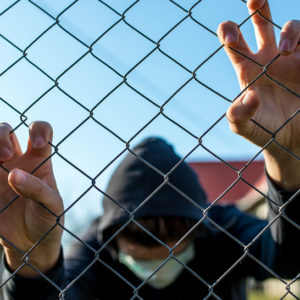As countries across the world try to stop the spread of COVID-19, world leaders are closing borders, enacting curfews, issuing shelter-in-place protocols, quarantines and store closures.
While not at the top of mind for most, another population is particularly at risk for the spread of the virus: Those in America’s jails and prisons and, in particular, young people in detention.
Many criminal justice advocates have already pointed out that prisons and jails are often overcrowded, and those who are incarcerated share cells, toilets, sinks, laundry and other commons spaces.
Because of these conditions, the virus is already spreading rapidly through adult facilities across the United States. Unfortunately, it’s only a matter of time before there is an outbreak in juvenile facilities as well.
Youth are less likely to die of the virus, but this still presents a huge public health risk.
In response to this, juvenile justice experts are calling for states to release youth with pre-existing conditions, such as asthma and diabetes, and those who are considered low-risk.
Simply stopping visitation is insufficient; to truly curb the spread of the virus, states must explore releasing many of the young people who are currently locked up, while making virtual visitation widely available and free.
Already, 15 corrections systems across the states have suspended all visitation in adult prisons (with some exceptions), and 37 corrections systems have suspended normal visitation for adults while still allowing legal visits. Additionally, more and more states have suspended visits to their juvenile facilities.
The Oregon Youth Authority, for example, has cut off all visitation for at least 30 days for all of its juvenile detention facilities. None of these kids can see their parents, siblings or friends during this time.
We now know that children and young adult brains are significantly different from adult brains until they turn about 25. So, for juveniles who are already often unable to see past their current circumstances, this negative adjustment will be even harder for them.
They are going to feel extremely isolated and hopeless. Some are already speaking out: One boy in juvenile detention was recently quoted as saying, “I just don’t want to die in here, not in here.”
While a mother in South Carolina pleaded to see her son, who is housed in a juvenile detention center, after he was attacked by others in detention with him. Her request was denied by the facility due to COVID-19. He, like many others, are at great risk of isolation as well as contracting the virus.
Fear and isolation are very real for all of us right now, but so much worse for kids who are locked up, feeling like they may be forgotten.
Unfortunately, stopping visitation is necessary to slow the spread of the virus, but there are other ways to mitigate the painful loneliness youth may be experiencing in detention. Facilities should make video and phone calls available as often as youth and their families want, and they also need to be free.
In addition, there are safe alternatives to incarceration that should be used at a time like this, and those who can be safely transitioned out of detention should be transferred.
This is not just a good idea because we’re in the midst of a pandemic. Research has shown that the use of confinement for juveniles is often ineffective.
In fact, certain states, like California, have significantly reduced their juvenile detention population by excluding all non-violent and low-level offenses while actually increasing public safety. Juvenile detention should only be used for those who pose a threat to public safety.
Other interventions, like evidence-based family intervention models, specialized mental health and substance abuse treatment models, and intensive youth advocate and mentoring programs can all be used in place of detention, though processes will need to be modified to account for our current situation and the need for social distancing.
Reducing overcrowded populations and releasing those most at risk would significantly help those who need to stay under supervision as well as protect the most vulnerable.
In this unprecedented time, states need to rethink their policies and double down on solutions that will keep the juvenile population safe.
This is an opportunity for states to show juveniles that they have not been forgotten and that they will not die alone.

